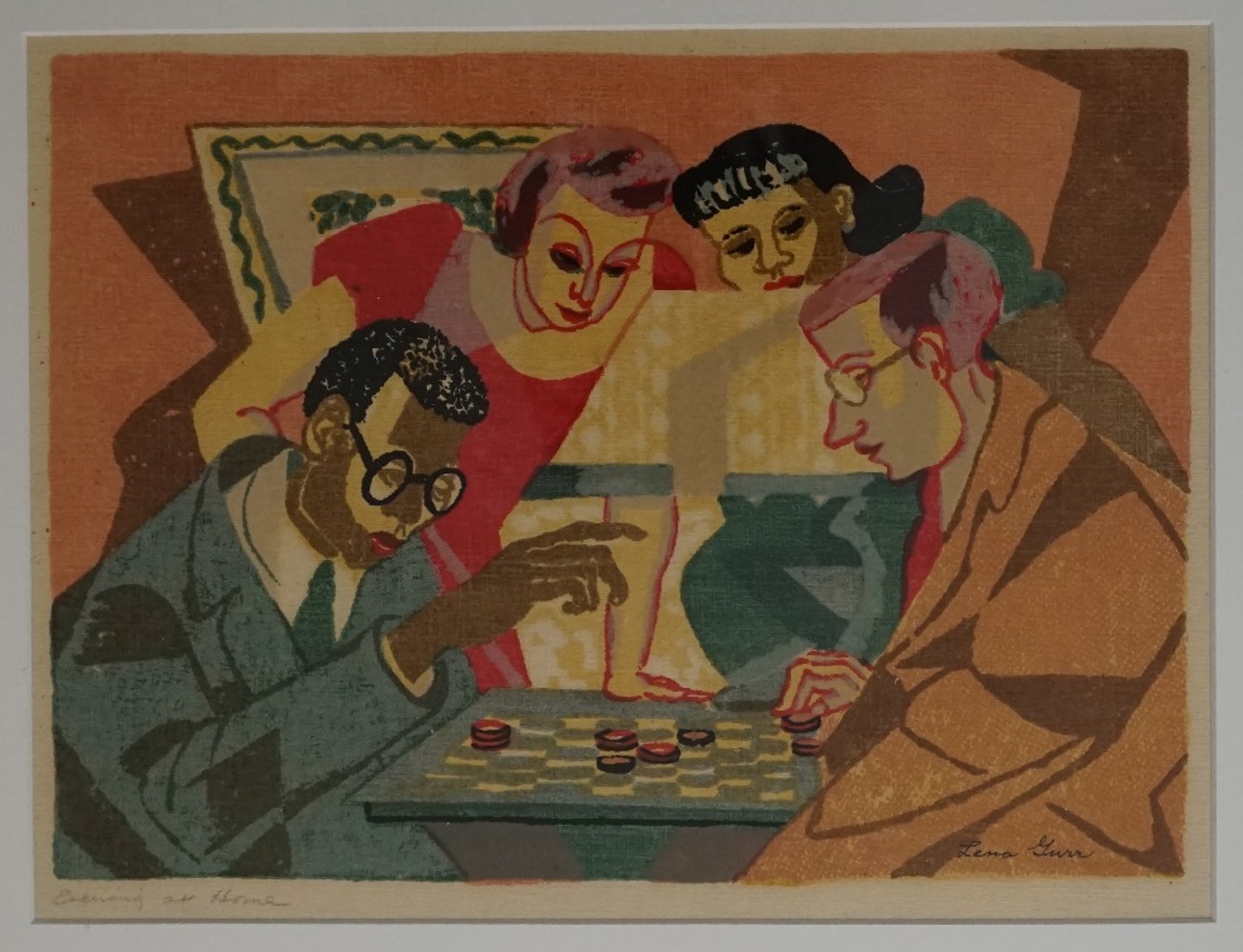Visions of America, an exhibition currently on view at the Everson, explores how artists depict life in the United States, from idyllic scenes of the American landscape to critical studies of the country’s history. Surrounded by works in the exhibition that are bold and saturated with color, Lena Gurr’s Evening at Home provides an intimate commentary on modern living. Gurr’s scene is familiar and domestic, but the tone is heightened by the palpable intrigue of friendly competition. Lena Gurr (1897-1992) was an American painter and printmaker of Russian-Jewish descent. Originally trained as a teacher, Gurr turned her attention to art in 1919, when she began taking classes at Educational Alliance Art School. She studied under John Sloan at the Art Students League in the early 1920s, and for the next several decades split her time between teaching art classes in New York City public schools and advancing her own art career. Her art was exhibited consistently at galleries and museums from the 1930s to the 1960s, and she fostered a particularly long relationship with the A.C.A. Gallery in New York City. During her career, she transitioned from naturalism and figural styles towards the abstracted forms and planes of Cubism. In both styles, Gurr maintained an interest in depicting social life, city scenes, and victims of both social and wartime injustice. Evening at Home contains four figures, two males and two females, who surround an active game of checkers. There is a slight tension in the posture of the group as they concentrate on the checkerboard, where five game pieces are in play. The two beige pieces belong to the player wearing a blue jacket and the three pink pieces belong to the player in brown. One of the pink pieces is double stacked, giving it the coveted position as a King and the ability to move in any direction. Clearly at the advantage, the man wearing brown may be contemplating his future success at winning the game, and even touches one of his opponent’s discarded pieces. The next move could seal each player’s fate. Perhaps Evening Home is an attempt to subtly depict the American struggle of privilege. Despite the guise of compositional balance, the checkerboard reveals the tension of American social structure, where one player’s last remaining men on the board have limited opportunity for movement, while his opponent, poised to win with a coveted King piece, has freedom of the board. Alternatively, perhaps Gurr provides a quietly humorous and relatable scene—the all too recognizable moment when friendly repartee turns to competitive tension, disrupting the expected quiet evening at home. Evening at Home is currently on display in Visions of America, on view through August 19, 2018. -Maggie Teschler, Curatorial & Library Intern Image caption: Lena Gurr, Evening at Home, 1948, serigraph, 10½ x 13½ inches, Everson Museum of Art; Gift of the artist, 75.68


